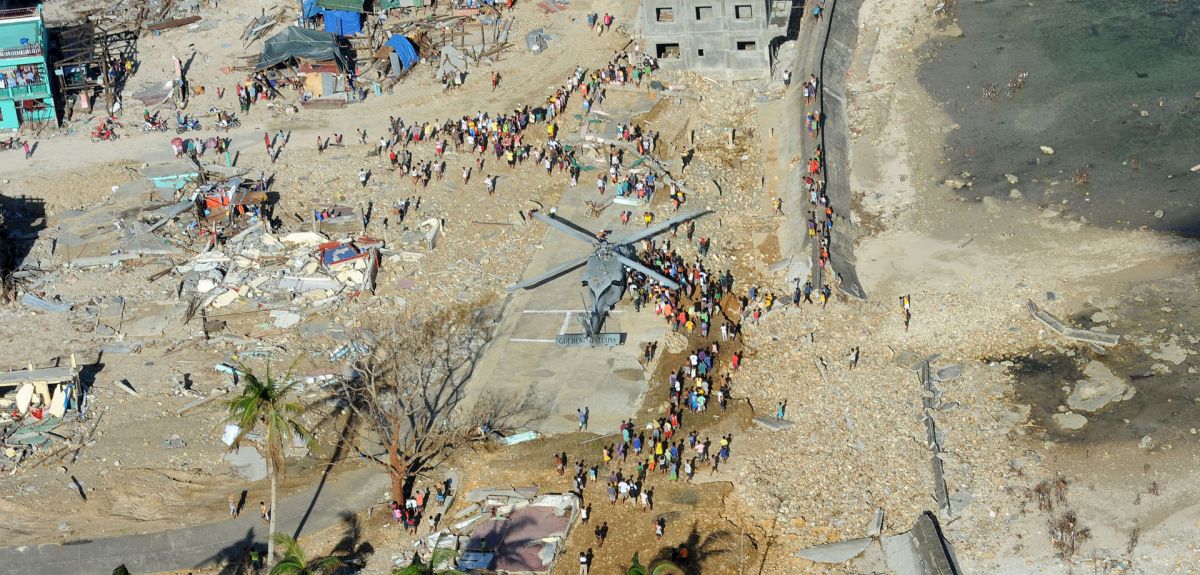
Climate change report identifies 'the most vulnerable'
A report has looked at which sections of the population are left most exposed to food shortages after extreme weather events.
Extreme weather events leave populations with not enough food both in the short- and the long-term. A new report by the Environmental Change Institute (ECI) at the School of Geography and the Environment at the University of Oxford concludes that better governance could have lessened the impact on the poorest and most vulnerable, and affected populations have been let down by the authorities in the past.
The report, commissioned by the charity Oxfam, tracks the effects on four countries: Russia which experienced a heatwave in 2010; flood-hit Pakistan the same year; East Africa during the drought of 2010-2011; and the Philippines after Typhoon Haiyan in 2013. The researchers conclude that the authorities in each of the countries studied were unprepared for extreme weather events, and citizens suffered even more than they needed to.
The report, 'A Sign of Things to Come?', says that the Russian heatwave led to a hoarding of food supplies and price-fixing by speculators, which compounded food shortages and led to global wheat prices rising dramatically. It also suggests this could possibly be linked with the political upheaval in the Middle East, with Egypt’s hungry protestors suffering the most.
In Pakistan, 'coercive landlords' took advantage of smallholders and others affected by the floods, says the report. Overall, the flooding is estimated to have led to an 80% rise in wheat and rice prices in 2010.
The drought-affected people of East Africa did not receive international or domestic aid for six months, partly due to the risks posed by armed groups. Food prices reached record levels in several markets including wheat in Ethiopia, maize in Kenya and red sorghum grain in Somalia, says the report. It notes that children under five accounted for over half of all deaths in Somalia.
Meanwhile in the Philippines, although storm surges were not a new problem, they were not properly understood by central and local governments, says the report. The exceptional storm surge associated with Typhoon Haiyan hit farmers and fishing communities particularly hard, with women, children and some ethnic minorities facing discrimination with aid distribution.
On a global level, the report warns that climate change is expected to increase the intensity and frequency of heatwaves and floods. It says although there is no scientific evidence to show a specific weather event would not have happened without climate change, scientists can estimate whether it increases the risk of an event. It finds that the Russian heat wave and the East African drought were more likely because of climate change, but there is not yet the evidence to say that climate change played a part in the floods in Pakistan or Typhoon Haiyan.
One of the lead authors Dr John Ingram said: 'Weather has always affected food security, particularly for many of the world’s poorest people. Perhaps we think of farmers or fishermen first, but extreme weather will affect many more people in other ways too. While direct measures such as emergency preparedness and the strengthening of response-related institutions is helpful, this study has identified the need for a wider cultural shift to ensure the poorest and most vulnerable are properly protected. This goes beyond mere technical improvements to equipment or redirected funding and gets to the very heart of what "climate justice" should be about.'
 Expert Comment: Chatbot-driven sexual abuse? The Grok case is just the tip of the iceberg
Expert Comment: Chatbot-driven sexual abuse? The Grok case is just the tip of the iceberg
 New study finds that stopping weight-loss drugs is linked to faster regain than ending diet programmes
New study finds that stopping weight-loss drugs is linked to faster regain than ending diet programmes